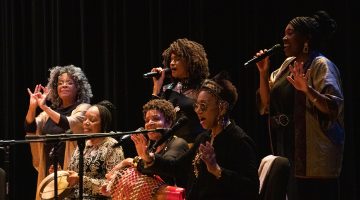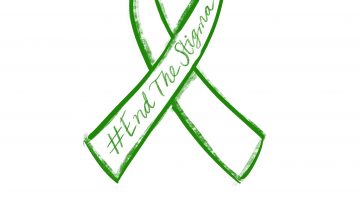
A century ago in 1918, jazz was just beginning to take America by storm with its loud, abrasive sounds, improvised harmonies and extensive cultural history. For many years to come, various critics would argue that jazz was a demonic form of music meant to brainwash younger generations. This was largely due to the fact that jazz was invented by blacks in the south who sought to express feelings of sadness, anger, loneliness, inequality, etc. Yet, while some people were opposed to the artistic expression of black folks, many others found jazz hypnotic and joyful.
There’s no question that jazz’s influence can be found in even the most mainstream songs. Without jazz, many of today’s popular genres would never have developed, including blues, rock ‘n’ roll, R&B, hip-hop and more. However, it’s also true that jazz has become one of the least-consumed genres of music in America, along with classical and children’s music. It seems as though jazz has aged, much like its O.G. fan base. So what exactly does this mean for jazz? Can we pronounce the genre that once dominated American radio as “dead”?
Even with the various fusions of jazz and other “cool” genres, there’s a strong fraction of millenials and post-millenials that enjoy jazz as itself — raw and unchanged. In fact, many of these fans were seen just this past weekend at the annual Reno Jazz Festival hosted by UNR, which went from April 27-29 and hosted several jazz performers like Peter Apfelbaum and Dafnis Prieto.
The jazz festival was littered with students from across the west coast, ranging from middle schoolers to college seniors. Traveling students also got the opportunity to compete in various categories of jazz, and were awarded for both solo and group performances. Among the college performers, winners were announced for best vocalist (Ryan Braga and Pressely Murillo), saxophonist (Eric Croissant), trombonist (Andrew Watkins), trumpeter (Antonio Uribe), rhythm section (Shimpei Ogawa) and outstanding performer (Isaiah Collier). These students exemplify the ways that jazz persists today, in a time when most college students’ music libraries mainly consist of trap, electronic and indie music.
Among these student performers were also professional ensembles, such as The Collective — a jazz band made up entirely of UNR faculty. The Collective includes members Adam Benjamin, Hans Halt, Andrew Heglund and Peter Epstein, who are all members of the Jazz and Improvisational Music Program at UNR.
Not only is Peter Epstein a member of The Collective, but he’s also a professor of jazz saxophone, the current chair of the music department and the director of the Reno Jazz Festival. Ultimately, he wants students who are unfamiliar with jazz to know that it’s a living, evolving art form, which will likely provide more questions than answers.
“Know that the performers are sincerely trying to present for you a musical manifestation of what they find to be beautiful and moving in the world,” he said, “and know that there are many folks out there who absolutely love to listen to whatever it is you are hearing.”
Dafnis Prieto, a musician from Cuba who also played at the Reno Jazz Festival, believes that the disconnect between jazz and younger generations is likely due to the different ways that music is used and distributed today.
“Jazz is the type of music where you have to really know, somehow, what it means and what are the musicians doing with the music,” he said. “And most of the young kids, they just like to use music either to dance or to talk on top of it. It’s not that they like music to really listen to. I think it’s a different experience.”
To find out if jazz is “dead”, we first have to consider the relevance of jazz over the past century. During the 1920s — also nicknamed the “Jazz Era” — black musicians were migrating in large numbers from the south to large metropolitan cities in the north, like Chicago and New York City. In their hearts and minds was a sound unfamiliar to the white population — a fusion of African rhythm and European melody. At the same time, radios began to make their way into every American household and aided in the distribution and popularization of jazz. Among these rising musicians was Louis Armstrong, a pioneer of jazz who symbolized the dynamic between fame and race. While he and many other black musicians were often invited to perform for large white crowds, they were just as often prohibited from staying in the same hotels as them or even eating in the same restaurants. This dynamic would persist for decades, although jazz would go on to capture the hearts of people transcontinentally.
It wasn’t until the mid-1960s that jazz, which had previously dominated public radio and mainstream music in America, began to lose its luster. The 1960s saw a great deal of change, and jazz simply didn’t reflect the angst that younger generations felt toward the world in general. Rather, young fans in the 60s gravitated more to rock ‘n’ roll music, with artists like The Beatles and Elvis Presley taking over pop culture (among others). Since then, various forms of music have developed through jazz and have become more popular in recent years. This includes rap, which not only reflects the same reliance that jazz has on rhythm and tempo, but also reflects mainstream society’s reaction toward black culture in different social contexts.
However, it would also be untrue to say that jazz isn’t enjoyed by younger generations at all. In fact, it’s just the other way around.
Over the past 40 years, jazz has become somewhat of a chameleon in music, disguising itself by fusing with other genres that, in reality, are the grandchildren or great-grandchildren of jazz. For example, famous rap artists like The Notorious B.I.G., OutKast, A Tribe Called Quest, Wu-Tang Klan, Common and Kendrick Lamar have been known to sample jazz in many of their songs, just as rock artists like David Bowie, The Doors, Bruce Springsteen, The Beatles and King Krule also have music heavily inspired by jazz. Even mainstream pop artists like Fergie can’t escape the subtle jazz influence that seemingly lingers in every song. And every college student is familiar with those “lo-fi” or “chill out” playlists on streaming apps, that are really just jazz beats accented with various synthetic sounds.
Unfortunately, streaming services reflect high levels of engagement with genres like rap, R&B, indie, rock and pop music. Jazz just isn’t enjoyed socially like it once was. But despite these facts, there’s no question that jazz is responsible for giving us the music we love and listen to today. Ultimately, the question may not be “is jazz dead?”, but rather, “in what ways has jazz stayed alive?” To understand the answer to this question, we’d simply have to plug in our earbuds, open our music library and listen to our favorite songs.












